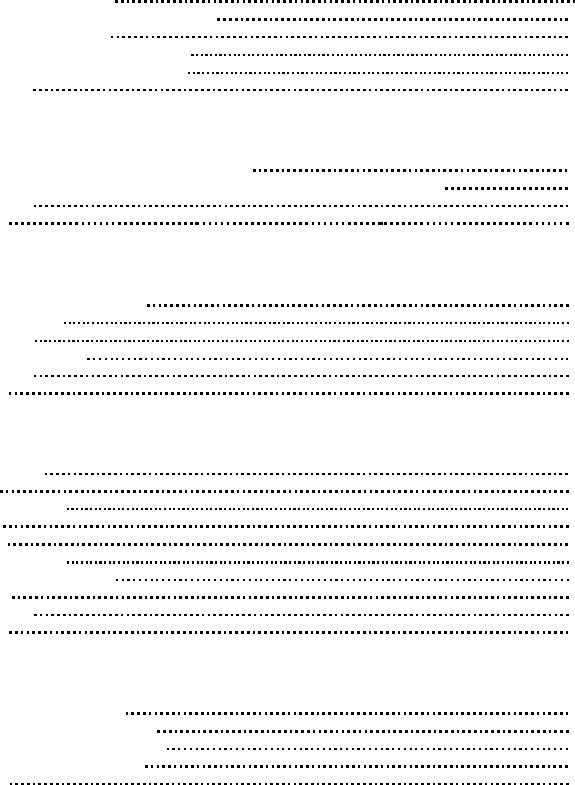
Drozdova_gram
.pdfEDITION 2005
T Ю Дроздова А И. Б е р е с т о в а В. Г М а и л о ь а
ENGLISH GRAMMAR
WITH A SEPARATE KEY VOLUME
REFERENCE
&
PRACTICE
JbithoCofjij
Т. Ю. Дроздова, А. И. Берестова, В. Г. Маилова
ENGLISH GRAMMAR
REFERENCE & PRACTICE
WITH A SEPARATE KEY VOLUME
Учебное пособие для старшеклассников
истудентов неязыковых вузов
суглубленным изучением английского языка
Издание девятое,
исправленное и дополненное
Янтолошя
Санкт-Петербург 2005
ББК 81.2Англ-2 Д 75
Рецензент: J1. П. Чахоян, профессор, доктор филологических наук
По вопросам приобретения издания обращайтесь:
ООО «Антология трэйд»:
Санкт-Петербург (812) 326-0127; 326-0128; 323-7301; sales@anthology.spb.ru Москва (095) 282-0402; chimera_trade@mtu-net.ru
ООО ИПЦ «КАРО»: Санкт-Петербург (812) 320-8479; 317-9460
Москва (095) 964-0846; 964-0210
Дроздова Т. Ю., Берестова А. И., Маилова В. Г.
Д 75 English Grammar: Reference and Practice: Учебное пособие. - Издание девятое, исправленное и дополненное. - СПб.: Антология, 2005. - 400 с.
ISBN 5-94962-075-5
Учебник по грамматике английского языка для школьников и студентов с различным уровнем подготовки. Оригинальная сопоставительная методика; опора на родной язык; многообразие примеров и
таблиц; более 500 упражнений.
ББК 81.2Англ-2
Редактор А. И. Берестова
Художественный редактор А. А. Неклюдова
Компьютерная верстка Д. В. Лемеш, А. Б. Ткаченко
Подписано в печать 20 09.05. Формат 84x108'/,6. Гарнитура PragmaticaCTT. Печать офсетная. Печ. л. 25. Доп. тираж 10 000 экз. Заказ № 6043.
Издательство «Антология».
199053, Санкт-Петербург, В. О., Средний пр., д. 4, лит. Б тел.: (812) 326-0127, 326-0128, 323-7301 sales@anthology.spb.ru
В Интернете: www.anthology.spb.ru
Отпечатано с фотоформ в ФГУП «Печатный двор» им. А. М. Горького
Федерального агентства по печати и массовым коммуникациям.
197110, Санкт-Петербург, Чкаловский пр., 15.
ISBN 5-94962-075-5 |
© Т. Ю. Дроздова, А. И. Берестова, В. Г. Маилова, 1996-2004 |
|
© ООО «Антология», 2005 |
ОТ АВТОРОВ
Предлагаемое вашему вниманию пособие создано на основе фундаментальных
классических трудов по грамматике английского языка, изданных в России, а также
новых работ английских и американских авторов в русле коммуникативной лингвис-
тики.
Пособие состоит из 15 тематических разделов, в которых приводятся общие све-
дения по каждой теме и объясняются особые случаи употребления. Цель данного сборника - изложить и объяснить в доступной форме существенные морфологичес-
кие особенности грамматического строя английского языка, необходимые для прак-
тического использования.
В основе структуры учебника лежит принцип сопоставления моделей родного и изучаемого языков, а также дифференциация сходных (для носителей русского языка), но различающихся по сути грамматических структур английского языка. Лучшему
усвоению материала должны способствовать таблицы, схемы и модели, систематизирующие материал разделов.
Данное пособие предназначено для учащихся школ и гимназий, а также для студентов неязыковых вузов с углубленным изучением английского языка. Оно может быть успешно использовано для работы со студентами любой формы обучения и уровня языковой подготовки, поскольку достаточно подробные объяснения снабжены большим количеством примеров, таблиц и моделей, закрепляемых в разнообразных упражнениях. Упражнения построены по принципу нарастания языковых трудно-
стей и предназначены для студентов начинающих (А), продолжающих (В) и продвину-
тых (С) групп. Упражнения индексированы соответствующими обозначениями.
К большинству упражнений предлагаются ответы-ключи, изданные отдельной кни-
гой "The Keys". Цифровые обозначения в упражнениях соответствуют ответам, помещенным в книге "The Keys".
В течение нескольких лет материал пособия успешно использовался в различных целевых программах при обучении студентов с разным уровнем языковой подготовки.
Т.Ю. Дроздова A. И. Берестова B. Г. Маилова

|
|
|
|
|
CONTENTS |
|
|
|
||
|
|
|
|
|
|
THE VERB |
|
|
|
|
1. The Verb "to be" |
|
|
|
|
|
|
8 |
|||
2. "There is (are)" Construction |
|
11 |
||||||||
3. The Verb "to have" |
|
13 |
||||||||
4. |
English Tenses Active |
|
16 |
|||||||
5. The Indefinite (Simple) Forms |
|
|
|
18 |
||||||
|
5.1 |
The Present Indefinite (Simple) Tense |
|
18 |
||||||
|
5.2 |
The Past Indefinite (Simple) Tense |
|
20 |
||||||
|
5.3 |
The Future Indefinite (Simple) Tense |
|
24 |
||||||
6. The Continuous Forms |
|
27 |
||||||||
|
6.1 |
The Present Continuous Tense |
|
27 |
||||||
|
6.2 |
The Present Continuous and Present |
Indefinite (Simple) |
31 |
||||||
|
6.3 |
The Past Continuous Tense |
|
34 |
||||||
|
6.4 |
The Past Continuous and Past Indefinite (Simple) |
35 |
|||||||
|
6.5 |
The Future Continuous Tense |
|
39 |
||||||
|
6.6 |
Revision |
|
|
|
|
|
41 |
||
7. The |
Perfect Forms |
|
42 |
|||||||
|
7.1 |
The Present Perfect Tense |
|
42 |
||||||
|
7.2 |
The Present Perfect and Past Indefinite (Simple) |
47 |
|||||||
|
7.3 |
The Past |
Perfect Tense |
|
52 |
|||||
|
7.4 |
The Future |
Perfect Tense |
|
58 |
|||||
8. The Perfect Continuous Forms |
|
60 |
||||||||
|
8.1 |
The Present Perfect Continuous |
|
60 |
||||||
|
8.2 |
The Present Continuous and Present |
Perfect Continuous |
61 |
||||||
|
8.3 |
The Present Perfect and Present Perfect Continuous |
62 |
|||||||
|
8.4 |
Revision |
|
|
|
|
|
65 |
||
|
8.5 |
The Past Perfect Continuous |
|
|
|
67 |
||||
|
8.6 |
The Past Continuous and Past Perfect Continuous |
69 |
|||||||
|
8.7 The Future Perfect Continuous |
|
71 |
|||||||
9. The Revision of Tenses |
|
72 |
||||||||
10. Tests |
the Future |
|
80 |
|||||||
11. Talking about |
|
82 |
||||||||
|
11.1 Present Tenses with a Future Meaning |
82 |
||||||||
|
11.2"to be going to ..." |
|
84 |
|||||||
|
11.3The Future |
Indefinite (Simple) |
|
85 |
||||||
|
11.4 "be to", "be about to", "be due to" |
88 |
||||||||
|
11.5 Revision |
|
|
|
|
|
88 |
|||
|
|
|
|
THE SEQUENCE OF TENSES |
|
|
|
|||
1. General Rules |
|
|
|
|
|
91 |
||||
2. |
Revision |
|
|
|
|
|
96 |
|||
3. |
Tests |
|
|
|
|
|
97 |
|||
4

DIRECT AND INDIRECT SPEECH
1. |
Indirect Statement |
and Request |
98 |
|
2. |
Indirect Command |
100 |
||
3. |
Indirect Questions |
|
101 |
|
|
3.1 |
Indirect General Questions |
101 |
|
4. |
3.2 |
Indirect Special |
Questions |
102 |
Revision |
|
103 |
||
THE PASSIVE VOICE
1. The Formation of the Passive Voice |
107 |
|
2. |
Uses of the Passive Voice Peculiar to the English Language |
108 |
3. |
Revision |
118 |
4. |
Tests |
120 |
THE USE OF THE SUBJUNCTIVE MOOD
1. Conditional Sentences |
122 |
||
|
1.1 |
Revision |
130 |
2. |
1.2 |
Test |
131 |
Making a Wish |
132 |
||
3. |
Revision |
135 |
|
4. |
Tests |
136 |
|
|
|
|
MODAL VERBS |
1. |
Definition |
137 |
|
2. Can |
|
138 |
|
|
2.1 |
Revision |
143 |
3. May |
|
144 |
|
4. |
Must |
|
147 |
5. |
4.1 |
Revision |
154 |
Should and Ought |
155 |
||
6. |
Need |
158 |
|
7. |
Revision |
160 |
|
8. |
Tests |
164 |
|
|
|
|
|
THE NOUN |
1. Formation of |
Nouns |
166 |
||
2. |
Classification |
of |
Nouns |
169 |
3. |
The Category of |
Number |
172 |
|
4. |
The Category of Case |
177 |
||
5. |
Tests |
|
|
181 |
5

THE ARTICLE
1. The Use of Articles with Common Nouns |
182 |
||
|
1.1 |
The Use of the Indefinite Article (a/an) |
182 |
|
1.2 |
The Use of the Definite Article (the) |
184 |
|
1.3 |
The Zero Article |
186 |
|
1.4 |
Revision |
191 |
2. |
The Use of Articles with Nouns of Material and Abstract Nouns |
193 |
|
3. |
The Use of Articles with Proper Nouns |
196 |
|
|
3.1 |
Geographical Names |
196 |
|
3.2 |
Names of Persons |
197 |
|
3.3 |
The Use of Articles in the Names of Places, Some Buildings, |
|
|
|
public organizations, etc |
198 |
4. |
3.4 |
Revision |
200 |
Special Difficulties in the Use of Articles |
201 |
||
5. |
The Use of Articles with Nouns in Some Set Expressions |
205 |
|
6. |
Tests |
207 |
|
THE PRONOUN
1. |
Classification of |
Pronouns |
209 |
||
|
1.1 |
Personal and |
Possessive Pronouns |
209 |
|
|
1.2 |
Reflexive Pronouns |
212 |
||
|
1.3 |
Demostrative Pronouns |
215 |
||
|
1.4 |
Interrogative Pronouns |
216 |
||
|
1.5 |
Defining Pronouns |
217 |
||
|
1.6 |
Indefinite and |
Negative Pronouns |
224 |
|
|
1.7 |
"Much/many", "little/few", "a little/a few" |
231 |
||
2. |
Tests |
|
|
234 |
|
THE ADJECTIVE
1. |
Formation of Adjectives |
235 |
2. |
Word Order: adjective + noun |
238 |
3. |
The Comparison of Adjectives |
241 |
4. |
Tests |
249 |
|
|
|
THE ADVERB |
|
1. |
Definition and |
Forms |
250 |
|
2. |
Classification |
of Adverbs |
254 |
|
|
2.1 |
Adverbs of Manner |
254 |
|
|
2.2 |
Adverbs of Time |
256 |
|
|
2.3 |
Adverbs of Frequency |
258 |
|
|
2.4 |
Adverbs of Place and Direction |
259 |
|
|
2.5 |
Adverbs of Degree, Measure and Quantity |
260 |
|
|
2.6 |
Viewpoint Adverbs |
266 |
|
3. |
Revision |
|
268 |
|
4. |
Tests |
|
270 |
|
6

THE VERBALS (the non-finite forms of the verb)
1. The Gerund |
272 |
|||
|
1.1 |
Forms. Tense/Voice Distinctions |
272 |
|
|
1.2 |
The Use of the Gerund |
273 |
|
|
1.3 |
Verbs Used with the Gerund and the Infinitive |
281 |
|
|
1.4 |
The Gerundial Construction |
285 |
|
|
1.5 |
The Gerund and the Verbal Noun |
287 |
|
|
1.6 |
Revision |
289 |
|
|
1.7 |
Tests |
291 |
|
2. |
The |
Infinitive |
|
293 |
|
2.1 |
Forms. Tense/Voice Distinctions |
293 |
|
|
2.2 |
The Use of the Infinitive without the Particle "to" |
294 |
|
|
2.3 |
The Functions of the Infinitive in the Sentence |
295 |
|
|
|
2.3.1 Revision |
303 |
|
|
2.4 |
The Infinitive Constructions |
306 |
|
|
|
2.4.1 The Complex Object |
306 |
|
|
|
2.4.2 The Complex Subject |
312 |
|
|
|
2.4.3 The For-to-Infinitive Construction |
319 |
|
|
2.5 |
Revision |
323 |
|
|
2.6 |
Tests |
325 |
|
3. |
The |
Participle |
327 |
|
|
3.1 |
Forms and Functions |
327 |
|
|
3.2 |
The Functions of the Participle in a Sentence |
328 |
|
|
3.3 |
Russian Equivalents of Participles Used as Attributes |
329 |
|
|
3.4 |
Russian Equivalents of Participles Used as Adverbial Modifiers |
330 |
|
|
3.5 |
Have Something Done |
339 |
|
|
3.6 |
The Absolute Participial Construction |
340 |
|
|
3.7 |
Revision |
341 |
|
|
3.8 |
Tests |
343 |
|
SOME CONFUSED OR CONFUSING ELEMENTS OF ENGLISH GRAMMAR
1. Some Prepositions Confused |
345 |
|||
2. |
The Complex Sentence |
349 |
||
3. |
Revision Exercises |
358 |
||
4. |
Emphasis |
|
|
360 |
5. |
Additional Exercises. Miscellaneous |
364 |
||
|
Appendix 1. |
List of Irregular Verbs |
371 |
|
|
Appendix 2. Irregular Verbs: Difficult Cases |
375 |
||
|
Appendix 3. Regular Verbs: Spelling Rules |
376 |
||
|
Appendix 4. List of Adverbs and Adverbial Phrases |
377 |
||
|
Appendix 5. Place of Adverbs |
|
383 |
|
|
Appendix 6. Verbs Followed by the Infinitive |
384 |
||
|
Appendix 7. American English |
390 |
||
|
Appendix 8. |
List of Grammar Terms and Key Words |
391 |
|
|
Appendix 9. |
Punctuation |
395 |
|
|
Literature |
|
|
400 |

THE VERB
1. THE VERB TO BE4
|
|
THE VERB TO BE' IN THE PRESENT INDEFINITE TENSE |
|
|
||||
POSITIVE FORM |
|
|
NEGATIVE FORM |
QUESTIONS |
||||
I |
am |
(I'm) |
I |
am |
not |
(I'm not) |
Am |
I? |
You |
are |
(you're) |
You |
are |
not |
(you're not or you aren't) |
Are |
you? |
He |
is |
(he's) |
He |
is |
not |
(he's not or he isn't) |
Is |
he? |
She |
is |
(she's) |
She |
is |
not |
(she's not or she isn't) |
Is |
she? |
It |
is |
(it's) |
It |
is |
not |
(it's not or it isn't) |
Is |
it? |
We |
are |
(we're) |
We |
are |
not |
(we're not or we aren't) |
Are |
we? |
You |
are |
(you're) |
You |
are |
not |
(you're not or you aren't) |
Are |
you? |
They |
are |
(they're) |
They |
are |
not |
(they're not or they aren't) |
Are |
they? |
•I'm small but I'm not helpless.
•Where are you from?
•How much are these stamps?
EXERCISES (A)
Ex. 1 |
|
|
|
|
|
|
|
|
|
|
|
|
|
|
|
|
|
|
|
|
|
|
|
|
|
|
||||
I. Write short forms (she's/we're, etc.). |
|
|
|
|
|
|
|
|
|
|
||||||||||||||||||||
1. he is |
he's |
|
|
3. she is not |
|
|
|
5.1 am not |
|
|
|
|||||||||||||||||||
2. they are |
|
|
|
|
|
4. it is not |
|
|
|
|
|
|
|
6. you are not |
||||||||||||||||
|
|
|
|
|
|
|
|
|
|
|
|
|
|
|
|
|
|
|
|
|
|
|
|
|
|
|
||||
II. Write the full forms (she is/we are, etc.) |
|
|
|
|
|
|
|
|
|
|
||||||||||||||||||||
7. we aren't |
we are not |
|
|
9. you're __ |
|
|
|
|
11. it isn't |
|
|
|
||||||||||||||||||
8. I'm |
|
|
|
|
|
10. they aren't |
|
|
|
12. she's |
|
|
|
|||||||||||||||||
|
|
|
|
|
|
|
|
|
|
|
|
|
|
|
|
|
|
|
|
|
|
|
|
|
|
|
|
|||
Ex. 2. Put in am, is or are. |
|
|
|
|
|
|
|
|
|
|
|
|
|
|
|
|
|
|
|
|
|
|||||||||
1. The sky /§ very blue today. 2.1 |
|
|
|
|
|
|
not tired. 3. This shelf |
|
|
very heavy. |
||||||||||||||||||||
4. These shelves |
|
|
|
|
|
|
child |
asleep. |
|
|
|
|
|
|||||||||||||||||
very heavy. 5. The |
|
6. Look! This |
||||||||||||||||||||||||||||
Mabel. 7.1 |
|
|
cold. Can |
you shut the window, |
please? 8. |
|
The castle |
|
one thousand |
|||||||||||||||||||||
years old. |
9. My |
brother and I |
|
|
good tennis players. 10. Amy |
|
at |
home but her |
||||||||||||||||||||||
parents |
in church. 11.1 |
|
|
|
|
student. 12. My sister |
|
|
|
|
|
|||||||||||||||||||
|
|
|
a |
|
|
an archeologist. |
||||||||||||||||||||||||
|
|
|
|
|
|
|
|
|
|
|
|
|
|
|
|
|
|
|
|
|
|
|
|
|
|
|
|
|
|
|
Ex. 3. Write full sentences. Use am/is/are each time.
1.(my grandparents very old) Mv grandparents are very old.
2.(my desk very comfortable)
8

3.(your spectacles in your bag)
4.(I not very clever today)
5.(this house very expensive) _
6.(the shops not open today)
7.(Mr Wren's grandson six years old)
8.(the houses in this street very big)
9.(the examination not difficult)
10.(those flowers very beautiful)
Ex. 4. Write positive or negative sentences. Use am/am not/is/isn't/are/aren't.
1. |
(Brussels...the capital of Belgium) Brussels is the capital of Belgium. |
||||
2. |
I...interested in hockey) I am not interested in hockev. |
||||
3. |
L.angry) |
|
|
||
4. |
It...cold today) |
||||
5. |
The Hague...in Switzerland). |
||||
6. |
I...afraid of dogs) |
||||
7. My hands...dirty) |
. |
|
|||
8. |
Russia...a very big country) |
||||
9. |
The Amur...in Europe) |
||||
10. |
Diamonds...cheap) |
||||
11. Motor-racing...a dangerous sport)
12. Squirrels...big animals)
Ex. 5. Write questions with What/Who/How/Where/Why...? Use am/is/are.
1.(What colour your house?) What colour is vour house?
2.(Where my key?)
3. (Where mv trousers?)
4.(How old your grandmother?)
5.(What colour his hair?)
6.(How much these shoes?)
7.(Who your favourite actor?)
8.(Why you always late?)
?
. ??
?
?
?
?
Ex. 6. Ask questions. (Read the answers to the questions first.)
1. |
(his name?) What's his name? |
Robert. |
2. |
(single or married?) Are vou single or married? |
I'm single. |
3. |
(British?) |
No,I'm not. |
4. |
(where / from?) |
FromAustralia. |
5. |
(how old?) |
I'm18. |
6. |
(a student?) |
No,I'm a secretary. |
7. |
(your mother a teacher?) |
No, she's a lawyer. |
8. |
(where / from?) |
She'sItalian. |
9. |
(her name?) |
Rachel. |
10. (how old?) |
She's40. |
|
9
